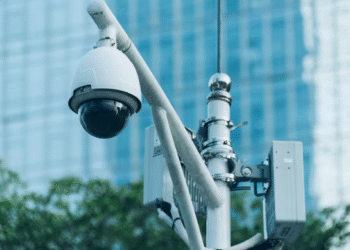As electric vehicles (EVs) become more popular, the demand for EV charging stations is growing rapidly. Installing an EV charging station in your home or business is a great way to support the shift to clean energy, but before you can begin charging, you must navigate the permit approval process.
In this guide, we’ll walk you through the EV charging station permit design and approval process, offering you the information you need to install your charging station smoothly and legally.
Why EV Charging Station Permits Matter
Before installing an EV charging station, obtaining the correct permit is essential. The EV charging station permit design ensures that your system meets local electrical codes, safety regulations, and zoning requirements. Without the proper permits, you could face fines, delays, or even legal issues down the line.
Proper permitting also ensures that:
- The installation is safe for users.
- The charging station is compatible with the local electrical grid.
- The system is correctly installed to prevent hazards like electrical fires or overloads.
By following the EV charging station design services and obtaining the necessary permits, you’re investing in safety and long-term functionality.
Step-by-Step Guide to EV Charging Station Permit Approval
Step 1: Choose Your Charging Station Type
Before applying for a permit, it’s important to decide on the type of EV charging station design services you want. There are two common types of EV chargers:
- Level 1 Charging Stations – These are the slowest type of chargers, using a standard 120-volt outlet. Typically, no permits are required for residential installations because they are low-powered. However, it’s still important to check with local authorities.
- Level 2 Charging Stations – These require a 240-volt outlet and are faster and more commonly installed in homes and businesses. They require more complex installation and generally need a permit.
Step 2: Check Local Zoning Regulations
Every city or municipality has its own rules and zoning regulations regarding the installation of EV chargers. It’s important to check with your local authorities to determine if you need a special zoning permit or any specific requirements.
For example, residential installations might only require a standard electrical permit, while commercial installations may need approval for things like signage, accessibility, and parking spaces.
It’s important to contact your local building or planning department to learn about the specific zoning and design restrictions for your area.
Step 3: Obtain an Electrical Permit
Most EV charging station permit design processes require an electrical permit. This ensures that the electrical connections are installed safely and meet local codes. If your charger requires a dedicated circuit or upgrade to your electrical panel, you’ll need to get this approval.
In many cases, an electrical permit is necessary for:
- Installing a new 240-volt outlet
- Adding dedicated circuits for the charging station
- Upgrading the home’s electrical panel to support the additional load
If you’re unsure about what’s needed, consult with a licensed electrician. They can assess your system and ensure that everything meets the local electrical code.
Step 4: Submit the Permit Application
Once you’ve determined what permits you need, the next step is to submit the permit application to your local authority. Most municipalities require you to submit plans for the EV charger, including:
- Electrical diagrams and wiring plans
- The make and model of the charging station
- The location where the charger will be installed
Some cities may also require a detailed layout of the charging station location, especially for commercial EV charger permit plans USA, which may include designated parking spots, access routes, and signage.
Step 5: Review and Approval Process
Once your application is submitted, it will go through a review process. Local authorities, such as the building department or electrical inspector, will examine your application to ensure it complies with all safety standards and local regulations. They may request additional documentation or changes to the plans.
The approval process typically takes anywhere from a few days to several weeks, depending on the complexity of your installation and the speed of your local authorities. During this time, it’s important to be responsive to any requests for clarification.
Step 6: Schedule an Inspection
Once the permit has been approved, the next step is scheduling an inspection. An inspector will visit your site to ensure that the installation is done safely and in compliance with local regulations.
The inspector will check for:
- Proper installation of wiring and electrical connections
- The location and accessibility of the charging station
- Compliance with all safety codes
Once the inspection is passed, you will be able to use your EV charging station!
Step 7: Install the Charging Station
Once you’ve obtained the necessary permits and passed inspections, you can proceed with the installation of the EV charger. It’s highly recommended to hire a professional installer with experience in EV charging station design services USA. A licensed electrician can ensure that the charger is installed safely and up to code.
Why Professional EV Charging Station Design Services Matter
The process of obtaining a permit and installing an EV charging station can be complex, especially for businesses or public installations. Working with a professional EV charging station design service can simplify the entire process, ensuring that your charging station complies with local regulations and operates efficiently.
Companies like Solar Estique specialize in EV charger permit plan USA, providing expert consultation and full-service installation for both residential and commercial clients. They can assist with:
- Identifying the correct permit requirements
- Designing the electrical layout for your charging station
- Managing the permit application and inspection process
Final Thoughts
Installing an EV charging station is a great way to support the electric vehicle revolution, but it’s important to ensure the installation is done correctly, legally, and safely. By following this step-by-step guide to EV charging station permit approval, you’ll make the process as smooth as possible.
For businesses and homeowners alike, partnering with a trusted provider like Solar Estique ensures a seamless installation process, from permit approval to charging station setup.
With the growing popularity of EVs, now is the perfect time to make the transition to a cleaner, more sustainable future.






